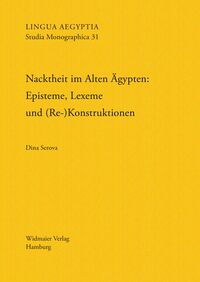
There is an overwhelming wealth of material on nudity and nakedness which has come down to us from Ancient Egypt. As a socio-cultural construct found in images and texts, the naked/nude body can be associated with negative, positive, and neutral connotations. Ancient Egyptian image-text-compositions can be used to study what was perceived as “naked” or “nude” and how the body was emically evaluated in certain situational contexts. Of special interest are also the epistemes surrounding the naked/nude body and how it was perceived and interpreted by researchers, whose conceptualizations of corporealities are sometimes biased. This monograph offers a comprehensive analysis of the representations and meanings of the naked/nude body in Pharaonic Egypt between the 5th and 30th Dynasties (c. 2300–350 BC). The focus is on a lexicological and lexicographical analysis of the conceptual field [nudity/nakedness]: Seven lexemes are analyzed in detail in order to grasp the semantic nuances and situational use of terms in the context of Ancient Egyptian texts. Taking into account a broad spectrum of text types, a solid foundation is laid for comparing statements about the naked/nude body found in texts with visual culture consisting of two- and three-dimensional pictorial representations. Alongside insights into the Ancient Egyptian lexicon, this study contributes to the cultural and social anthropology of Ancient Egypt, showing how nakedness/nudity was contextually and discursively constructed. The result is a nuanced view of nakedness/nudity as a culturally shaped concept, providing fresh insights into clothing and gender roles in Ancient Egypt.